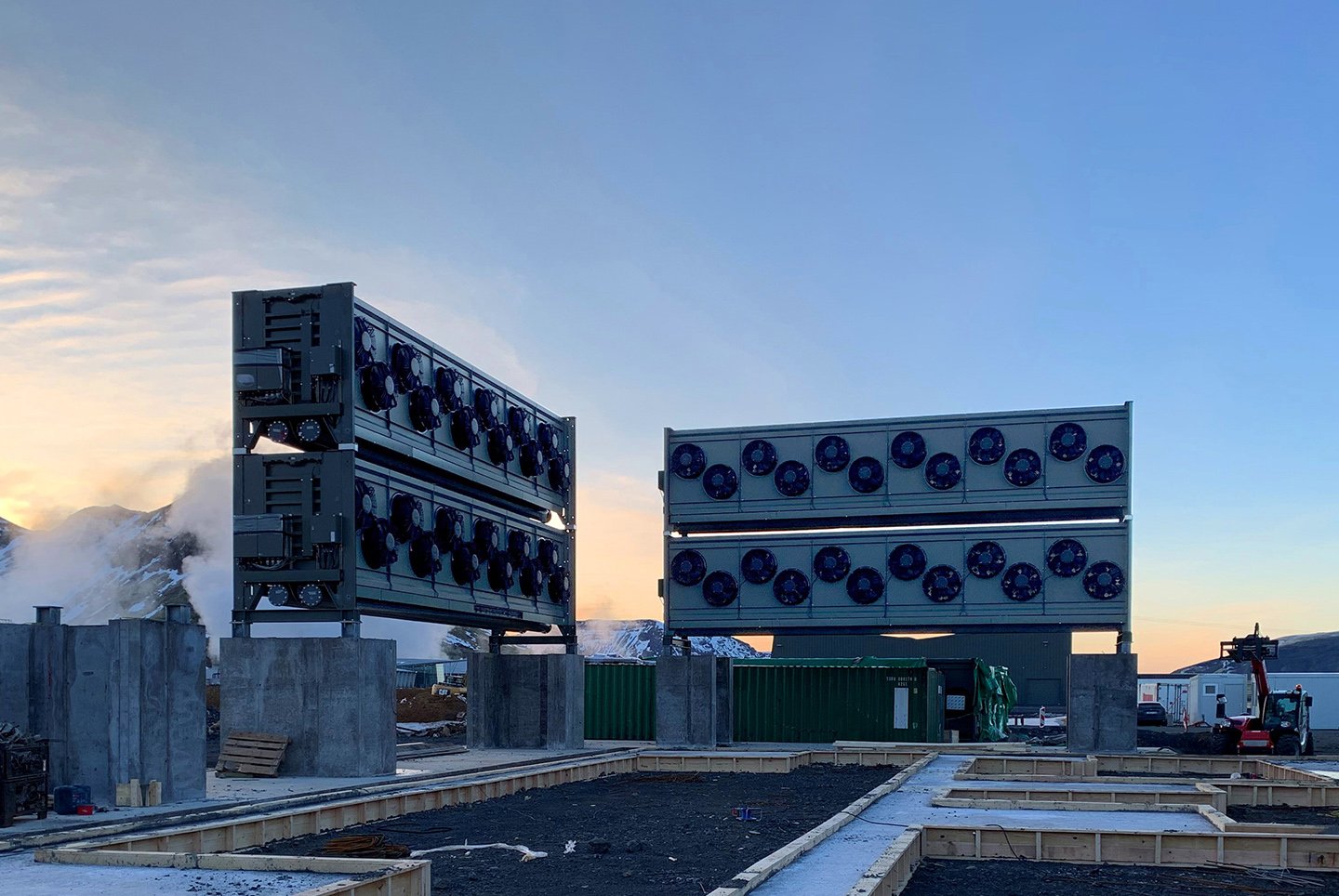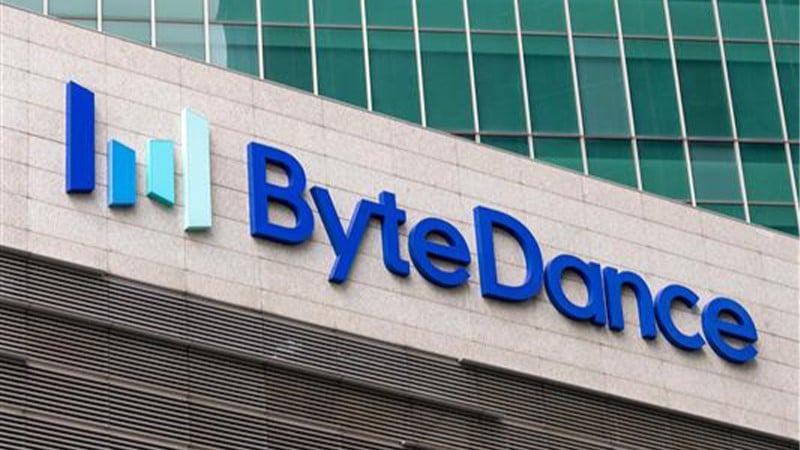February 2024
Article
4 minutes
Climeworks: digging deeper for climate solutions
Claire Shaw – Portfolio Director
Key Points
- Most climate change solutions focus on reducing future carbon emissions, but we need to also remove the carbon that’s already there
- Climeworks is currently the only company removing carbon dioxide from the air with direct air capture technology, and then storing it underground
- Co-founder Christoph Gebald tells us why he thinks by 2050, the carbon capture industry will be as big as the oil and gas industry is today

As with any investment, your capital is at risk.
We can’t beat climate change simply by reducing the carbon dioxide we produce. We must also strip vast amounts of existing CO₂ from the atmosphere.
Swiss company Climeworks is at the forefront of a new industry, carbon removal, enabled by ‘direct air capture’ (DAC) technology.
The process involves specialised sponge-like filters that capture and bind CO₂ molecules from the air, which are then heated to release the captured gas and finally stored deep underground.
In the latest episode of the Invest in Progress podcast, co-founder Dr Christoph Gebald shares his passion for carbon removal with Lawrence Burns, deputy manager of Scottish Mortgage.
Removing the final 10 per cent
Gebald notes there are two sides to achieving climate targets. While reducing our carbon emissions is “90 per cent of the journey,” Climeworks is focused on the final 10 per cent – removing carbon from the atmosphere to counteract unavoidable emissions.
Currently, only two options are available – planting trees or, as Climeworks does, removing CO₂ from the air and storing it underground.

Listen to the latest Invest in Progress podcast episode to learn more about Climeworks’ journey to inspire one billion people to remove CO2 from the air.
Listen to the podcast here.
Climeworks is the first company to deliver a commercial solution. Gebald explains that although there are many parties talking about doing carbon removal, “we for the moment are the only ones delivering and actually verified by a third party.”
“The total volumes that must be taken out of the air with a technology like ours are estimated to be 5 to 15 billion tons [annually] by 2050.”
That means a steep learning curve.
Climeworks’ DAC facility in Iceland, Orca, which started operating in 2021, currently removes a couple of tons of emissions per year, equivalent to “the unavoidable emissions of roughly 10,000 electric cars”.
Mammoth, the company’s next Icelandic facility due to start operating this year, will scale that by ten times – a capacity of 30,000 to 40,000 tons.
From there, Climeworks is targeting multi-million-ton carbon removal by 2030. The US Department of Energy is on board. It recently announced $600m in support to build a further ten-times-scaled facility in the US.
By 2050, the company aims to achieve an overall capacity of a billion tons of carbon annually.
Gebald thinks it’s achievable, “That is exactly the amount of scaling that, for example, the renewable industry, both solar and wind, did between 2000 and 2020.”
By 2030, he hopes Climeworks can be on par with where solar capacity was in 2000 so that “To our kids and grandkids, the image of an air capture plant will be as normal as today a wind farm or a solar farm is to us.”
Gebald believes that with the right policy incentives and supply chains in place by 2030, Climeworks could then scale its DAC technology “by 1,000 times over the next 20-year timeframe”.
Oil and gas in reverse
While the cost is currently $800-$900 per ton to remove CO₂ from the atmosphere, Gebald believes that a realistic long-term estimate is $200-$300 per ton.
If you multiply that price by the predicted need to remove 5 to 15 billion tons of carbon annually by 2050, “you end up with a trillion-dollar market”.
“Essentially, 30 years down the road, this market will be as big as oil and gas is today.”
“If you look at how the oil and gas industry is set up today, it’s 10-20 huge companies acting in this market. I expect that in 2050, we’ll have the same number [of carbon removal companies] operating on a global scale, having hundreds of billions of revenue.”
“It’s impossible that a single company will be able to deal with [15 billion tons each year],” admits Gebald. So, he welcomes others to the industry.
But Climeworks’ head start means it has been refining its technology and gathering valuable data to improve its processes before others have deployed workable solutions.
“What’s important is our ambition to lead the pack,” says Gebald. “Leadership defined by the money raised, the people employed, the agreements closed. This is where Climeworks is in the pole position.”
Climeworks’ founders, Dr Christoph Gebald and Dr Jan Wurzbacher, met in 2003 as mechanical engineering students at ETH Zurich. From the outset, they shared a passion for improving the world through entrepreneurship.
In 2007, they began to “scout very proactively for topics with the potential to be commercially deployed.” Having researched direct air capture and optimised the technology, they were “so fascinated by the results” that they founded Climeworks in 2009, “right after handing in our thesis”.
Making a difference
Scottish Mortgage holds a 0.35 per cent stake in Climeworks which, as deputy manager Lawrence Burns highlights, is “at the much smaller end of everything we do” – both in terms of holding size and the growth stage of the company.
Burns explains that to consider such an investment, “the opportunity set has to be really large so that … it can make a big difference, potentially, for clients.”
“We’re very open that there’s a wide range of outcomes with some of these earlier stage investments, but … if they work, we’ll happily devote more capital to them and grow them and own them for the next 10 years.”
In the meantime, Burns is excited to participate in Climeworks’ “journey of creating a new industry” for a more sustainable future.
About the author - Claire Shaw
Portfolio Director
Claire Shaw is a portfolio director and plays a prominent role in servicing Scottish Mortgage’s UK shareholder base. Before joining in 2019, she spent over a decade as a fund manager with a focus on managing European equity portfolios for a global client base. With a background in analysing companies and communicating investment ideas, Claire is also responsible for creating engaging content that makes the Scottish Mortgage portfolio accessible to all its shareholders. Beyond that, she works closely with the managers, meeting with portfolio companies and conducting in-depth portfolio discussions with shareholders.
Important information
This communication was produced and approved at the time stated and may not have been updated subsequently. It represents views held at the time of production and may not reflect current thinking.
This content does not constitute, and is not subject to the protections afforded to, independent research. Baillie Gifford and its staff may have dealt in the investments concerned. The views expressed are not statements of fact and should not be considered as advice or a recommendation to buy, sell or hold a particular investment.
Baillie Gifford & Co and Baillie Gifford & Co Limited are authorised and regulated by the Financial Conduct Authority (FCA). The investment trusts managed by Baillie Gifford & Co Limited are listed on the London Stock Exchange and are not authorised or regulated by the FCA.
A Key Information Document is available by visiting our Documents page.
Any images used in this content are for illustrative purposes only.






